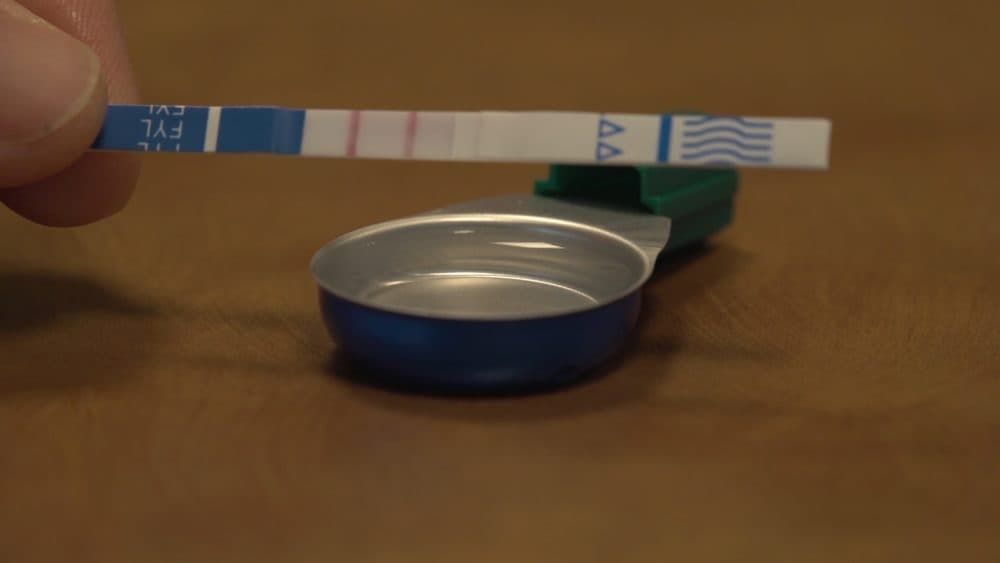Advertisement
Fentanyl Test Strips Reduce Risk Of Overdose In Small Study

Fentanyl, the powerful synthetic opioid, is found in 89 percent of overdose deaths in Massachusetts. And yet virtually none of the five or six men and women who will die today had the opportunity to test their bag of brownish powder to determine if the product sold as dope was laced with fentanyl.
A study out of Brown University says that should change because fentanyl test strips could help prevent an overdose.
Sixty-two percent of young adult drug users who participated in the study in Rhode Island dipped the thin, pliable strips into the cooker where they heated the powder, or into their urine sometime after injecting. Half reported a positive result — a single dark pink line emerging on the strip — signaling fentanyl.
Most changed their routine as a result in at least one of these ways: 45 percent said they used a smaller amount of the drug; 42 percent slowed down their use; 39 percent used with someone else who could help if they ODed; and 36 percent did a test amount before injecting the full syringe.
The study's senior author, Brandon Marshall, says these steps, alone or in combination, reduce the risk of a fentanyl overdose.
"Given the crisis that we're in currently with fentanyl overdose in the United States, these technologies are worth considering," said Marshall, an associate professor of epidemiology at Brown University's School of Public Health.
But few drug users have access to fentanyl test strips. They are not FDA-approved, so are not for sale in drugstores or other outlets in the U.S. A handful of harm reduction groups fund distribution through private contributions. Other groups say they'd like to order the strips from the Canadian manufacturer but can't afford the cost: about $1 per strip.
Some organizations say they don't hand out the strips for fear they'd be held liable in the case of a false negative, because they might be prosecuted for aiding in drug use or because they aren't sure the strips work. Lawmakers in Rhode Island passed legislation earlier this year to relieve concerns about civil or criminal responsibility.
Until recently, there's been little research that proved testing for fentanyl could be an effective way to curb overdoses and death during the opioid epidemic. Marshall says the Rhode Island study is the first attempt to train a group of young drug users and then track their use of the test strips. A survey of people who inject drugs in Greensboro, North Carolina, found that 43 percent did something to protect themselves from a fentanyl overdose, and 77 percent said use of the strips made them feel safer.
The strips have limitations. They show the presence of fentanyl but not the amount of the drug present. And while they detect most of the common variations of fentanyl found in the U.S., it's not clear if they will pick up new analogs. The strips can be used to test fentanyl in cocaine, meth or pills, but the user would have to crush the drug and mix it with a small amount of water to activate the strip.
Marshall says he urged study participants to adopt the same increased safety measures even if they got a negative fentanyl result — two pink lines on the strip.
"They're not a silver bullet, they're not a perfect technology by any means," Marshall said. "But they're part of a broader package of technologies we can employ to try to get a handle on the overdose crisis in this country."
